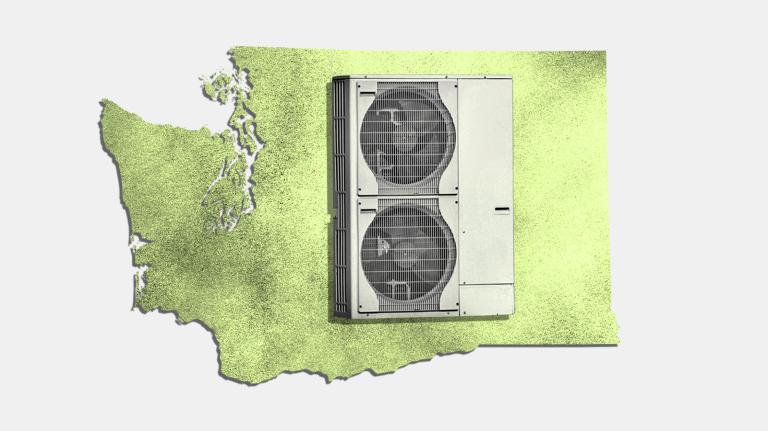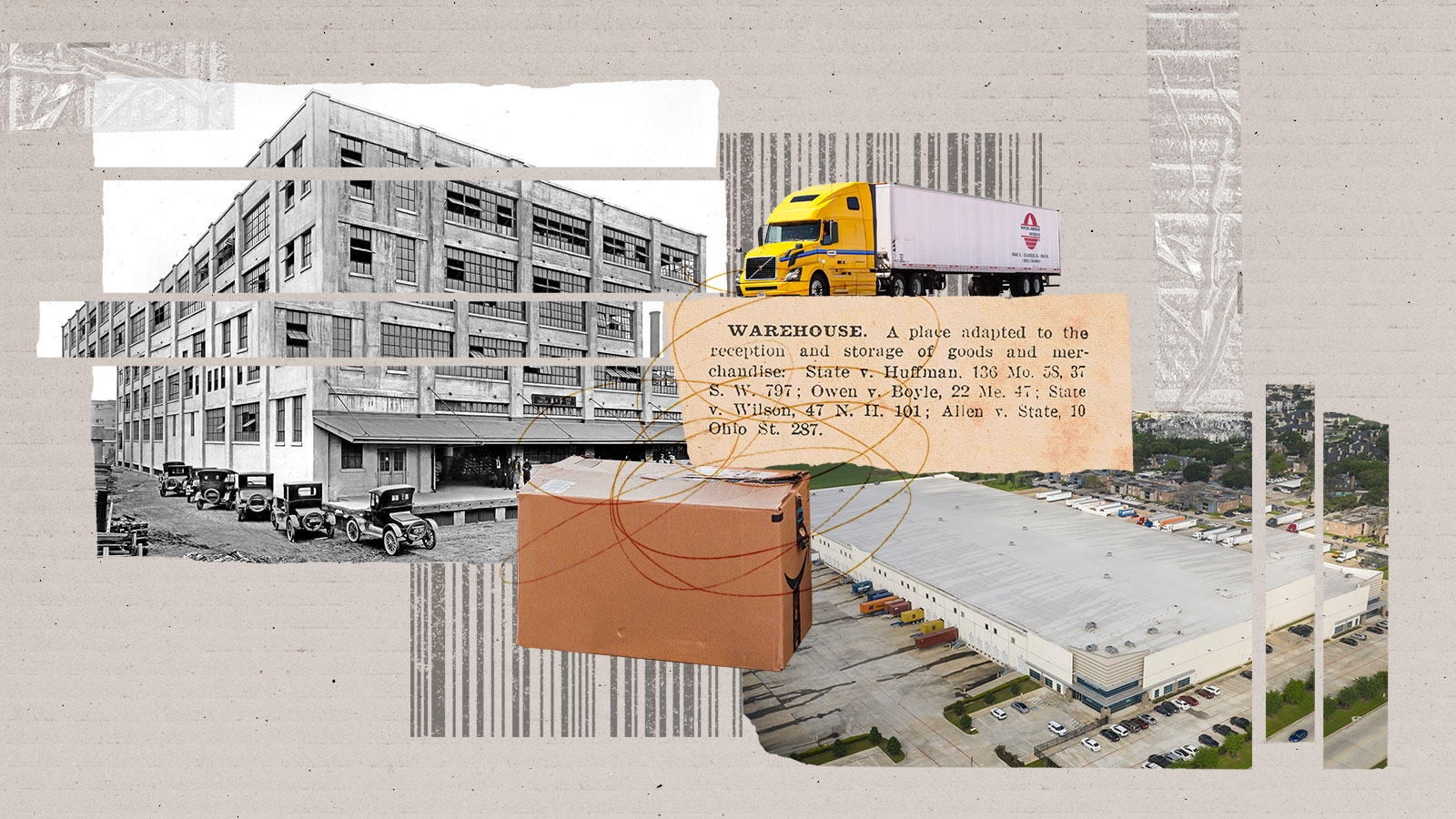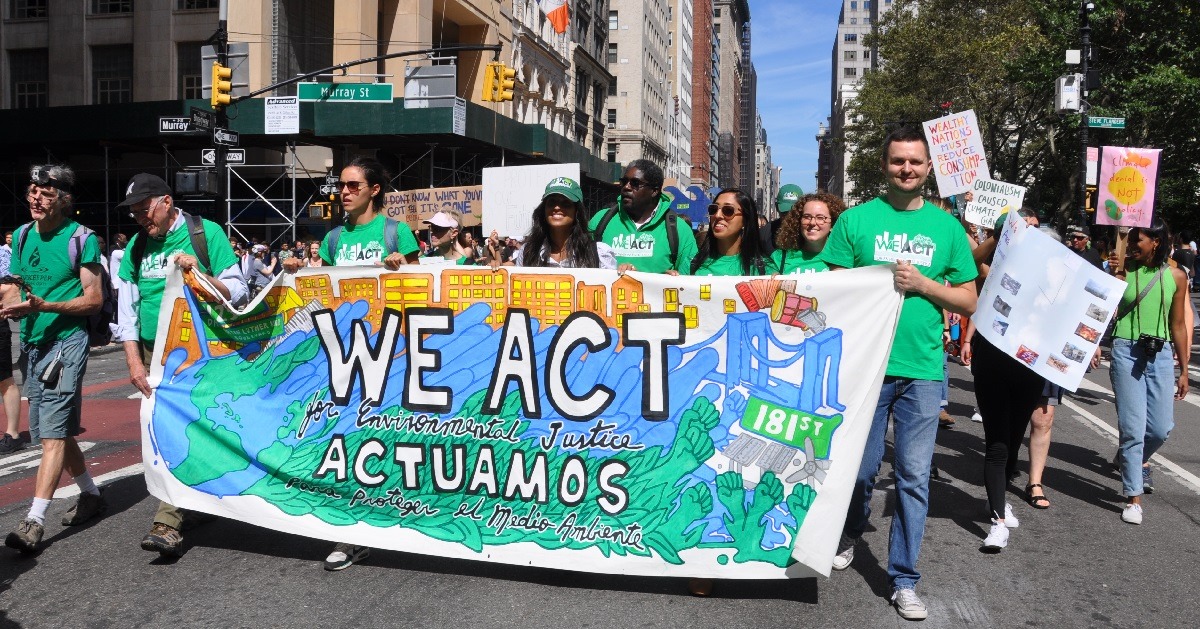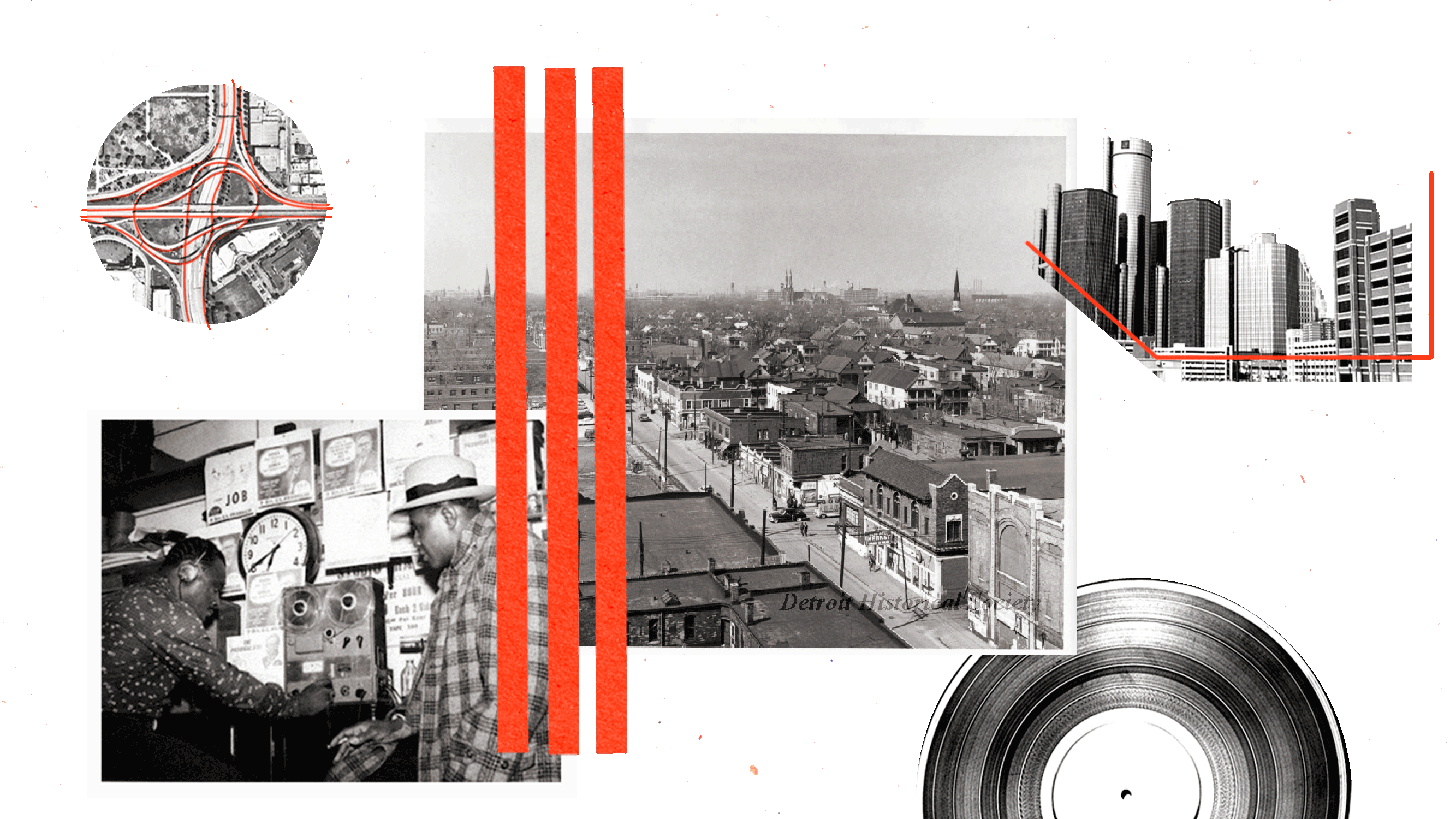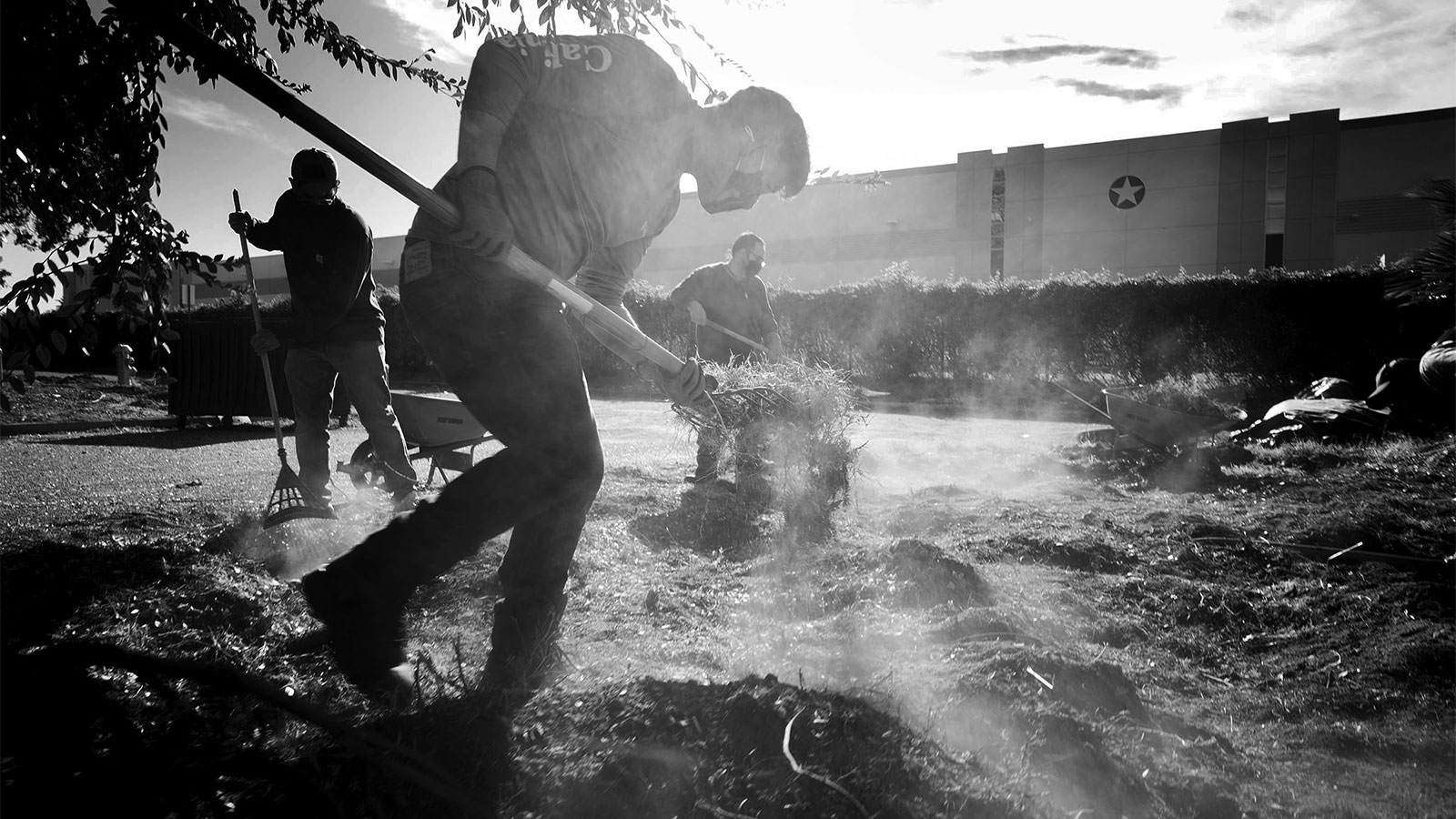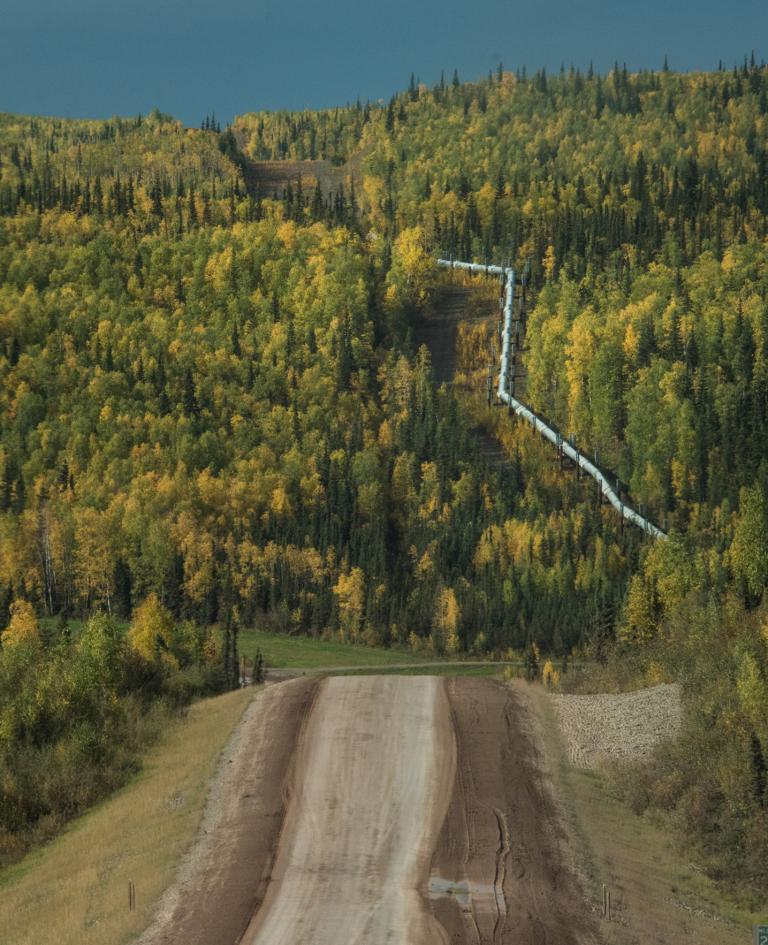On May 24, 2019, Anastasia Kidd picked her 1-year-old up from the floor of her apartment in Red Hook, a waterfront neighborhood in Brooklyn. A thin layer of dust coated his skin, his hair, his clothes. “He had dirt all over him,” Kidd recalled a few months later during a community meeting. “I had to close the windows.” Half a block away, several bulldozers scraped the ground, digging up layers of wood, metal, and red bricks that for over a century had comprised the Lidgerwood complex.
Built in 1882, the two-story metalworking factory was the birthplace of boilers that heated the booming city, coffee hulling machines shipped to plantations in Brazil, and engines that propelled the drilling of the Panama Canal. When the foundry left Brooklyn’s waterfront in 1927, the building passed from owner to owner until 2018, when the United Parcel Service, or UPS, bought it and several surrounding properties as part of a plan to erect a 1.2-million-square-foot warehouse in its place. As bulldozers rammed down the Lidgerwood’s centuries-old walls and scraped the site clean of its history, a layer of dust blanketed the neighborhood.
Back then, Red Hook’s residents — a mix of Black and Latino families that had lived there for generations and wealthier newcomers — had no way of knowing that the UPS warehouse was the first in an onslaught of e-commerce shipping facilities that would spread unimpeded through the neighborhood.
“During the dark of night of the COVID lockdown, last-mile facilities arrived,” said Andrea, a Red Hook resident who moved to the neighborhood in 2007. (She preferred to omit her last name to avoid confrontation with some of her neighbors.) “That’s when everybody went, ‘What is happening?’”
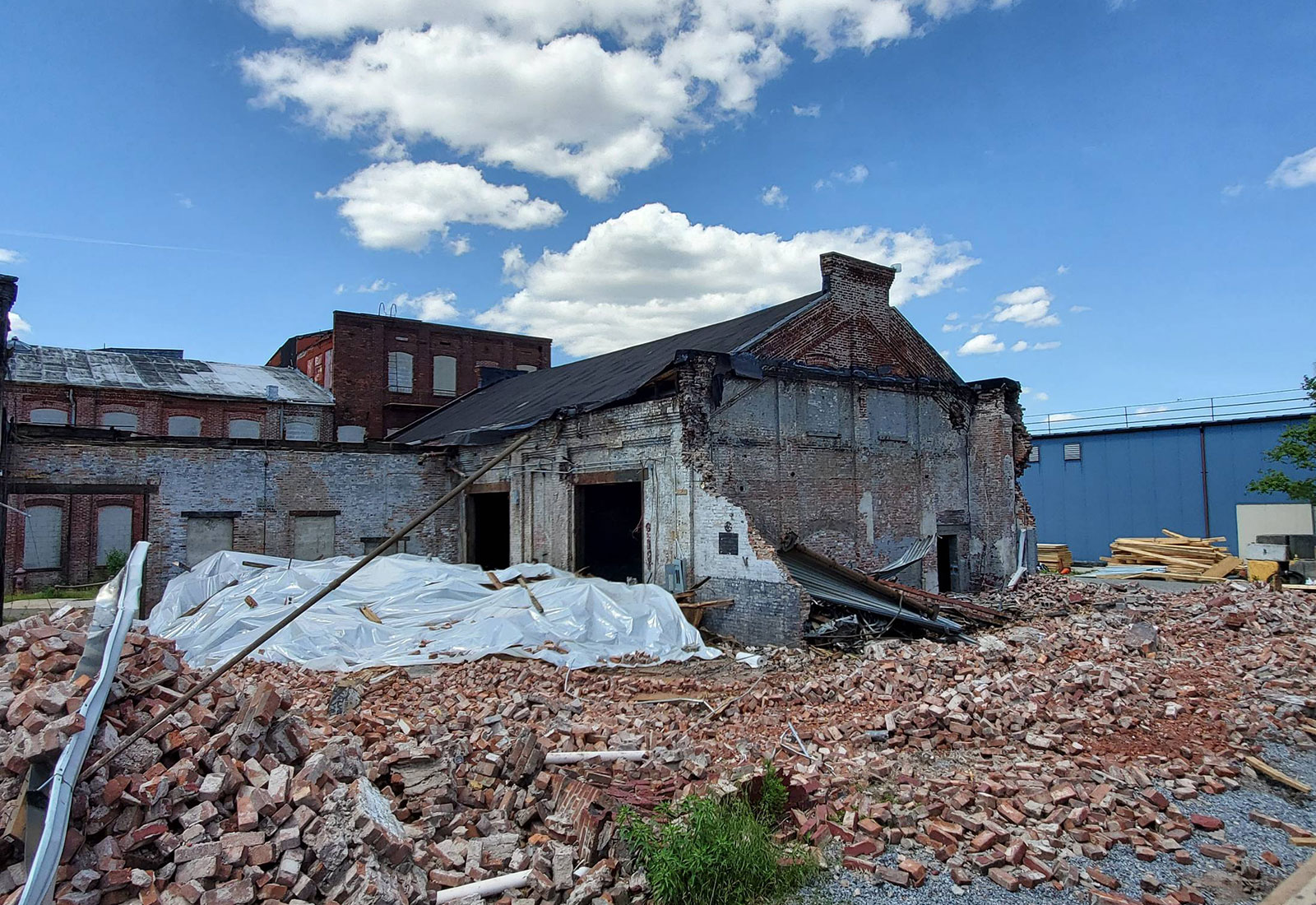
As the coronavirus swept through New York, it changed consumer culture in the city. Millions of purchases moved from in-person to online, and Amazon went “on a shopping spree,” as the New York Times put it. In less than a year, the company added at least nine new last-mile distribution centers — warehousing for online retail items before their final destination — in Brooklyn and Queens, quadrupling its total. In Brooklyn, Queens, and the Bronx, more than a dozen others are under construction to service companies like Amazon, FedEx, and UPS.
Nearly 10 percent of Red Hook’s total square footage now serves as, or has been approved for, e-commerce shipping facilities. Advocates fear that as facilities open, a steady stream of tractor trailers and smaller delivery trucks will clog the narrow, already cracked streets. Near the waterline, the din of backhoes and diggers hums in the background, and huge portions of barren land, covered in sand, gravel, and dust announce the scale of what’s to come.
Community members from around the city sought help from the nonprofit New York City Environmental Justice Alliance, or NYC-EJA. As advocates delved into the cases, it became obvious that the new warehouses had three things in common: They appeared near mostly Black, Latino, and low-income communities. They were big — really, really big. And they were popping up across from parks, community gardens, and schools with no environmental review or community engagement process.
“[Communities] found out when there was almost nothing to do,” said Alok Disa, a senior research and policy analyst with the nonprofit Earthjustice, which has partnered with NYC-EJA to push for regulation of the new shipping facilities. There was “a sense of almost desperation and helplessness because they felt so disempowered.”
Working with zoning veteran Eva Hanhardt, a member of the consulting firm Collective for Community, Culture, and the Environment, the environmental groups found the answer hiding in a 420-page text from 1961 — the most recent version of New York City’s zoning ordinance. The document laid out different rules for industries based on how much pollution they produced. The less hazardous the industry, the fewer environmental regulations it had and the closer it could be placed near community spaces. The code listed warehouses as among the least harmful.
At the time the zoning code was written, it was a fairly accurate assessment. Warehouses in the ’60s were generally used to store things before they arrived at retailers. Freight came and went at certain hours, and the buildings were relatively small, standing, on average, less than 30 feet, or two stories tall.
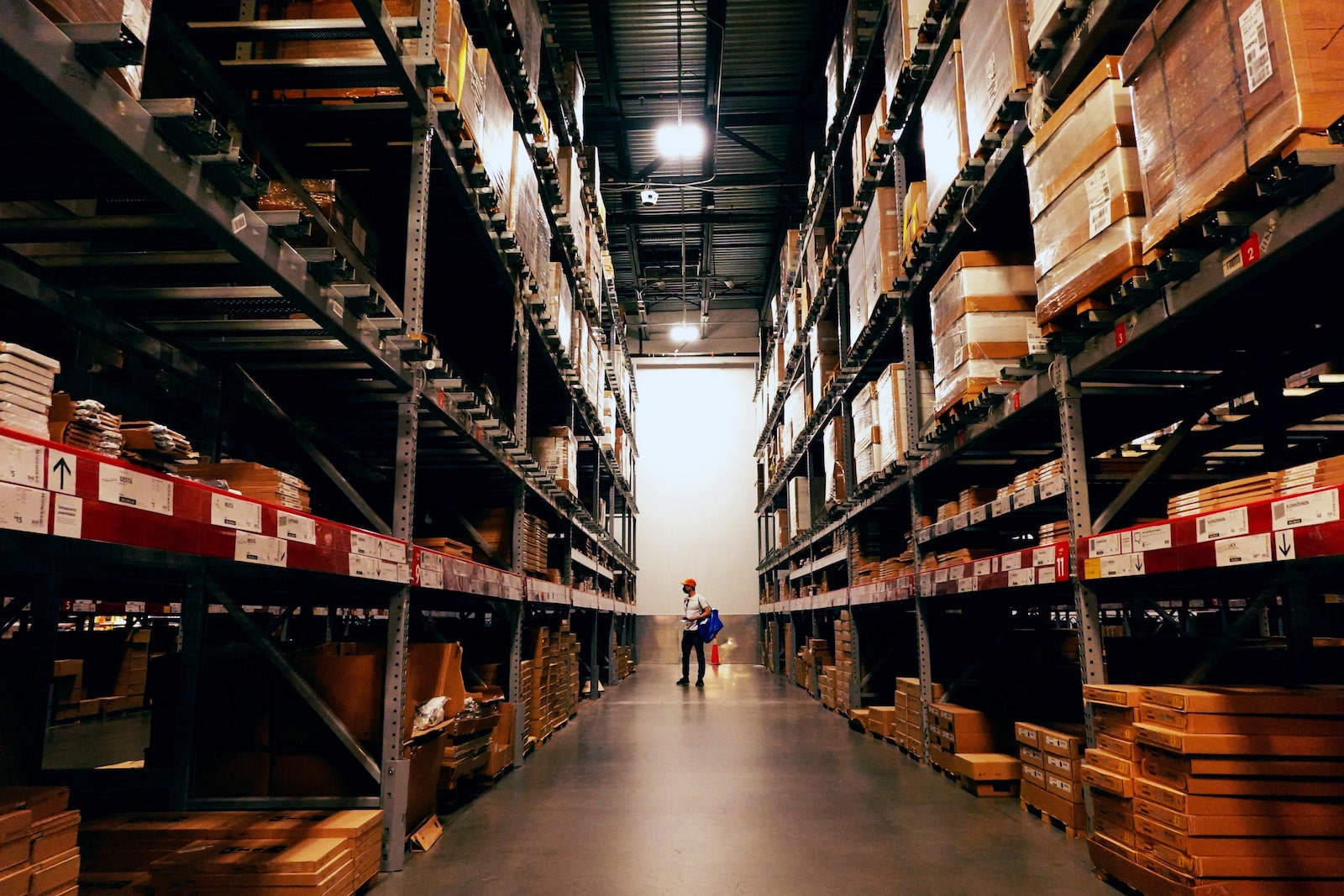
But today’s distribution centers are “creatures of an entirely new logistics system,” Hanhardt said. In the last decade, the size of the biggest warehouses has more than doubled, from 500,000 square feet to more than a million. UPS’s distribution center in Red Hook will stand 60 feet tall — twice the height of warehouses in the 1960s and taller than the Lidgerwood complex it is replacing. The rise of e-commerce platforms, and the competition for speedy deliveries, also means that these last-mile facilities are operating all day, every day. Some estimates calculate that modern warehouses can bring around 1,000 additional daily truck trips to a surrounding neighborhood. The presence of these extra vehicles can worsen local air quality, upping the risk of asthma, heart attacks, and premature deaths.
Yet despite this massive jump in size, activity, and pollution, New York City’s zoning code remains unchanged: Last-mile facilities built today still fall under the 1961 definition of a warehouse. And building them triggers the same environmental requirements — none.
Experts argue this isn’t a problem unique to New York. The United States is the only industrialized country without a national, standardized zoning code — meaning that there’s no universal definition of what a modern warehouse is, how hazardous it should be considered, and where it should be placed. This has left communities from New Jersey and Philadelphia to Chicago, Salt Lake City, and California’s Central Valley struggling to reconcile outdated or inadequate zoning codes with the rapidly changing landscape of e-commerce and shipping.

“The next generation of the fulfillment center already exists,” urban planning expert Rick Stein wrote recently about the sprawl of e-commerce fulfillment centers near and in urban spaces, what he calls the ‘Ama-zoning of America.’ “Existing zoning codes, many of which were written for a ‘simpler’ time, are inadequate.”
And without proper environmental regulation, the placement of these new facilities is perpetuating environmental injustices. A recent investigation by Consumer Reports and The Guardian found that Amazon, which opened more fulfillment centers in 2020 than in the four years prior combined, has placed 69 percent of all its facilities in neighborhoods with a greater percentage of people of color. Amazon did not respond to Grist’s request for comment.
As consumers increasingly move online, the U.S. is expected to need around 330 million square feet of additional warehousing space by 2025. Prologis, one of the world’s largest industrial real estate companies, owning nearly 1 billion square feet of industrial warehousing worldwide, said that just in the U.S., e-commerce demand represented 25 percent of new lease signings in the first quarter of 2021. For community advocates and nonprofits, fighting the unregulated sprawl feels like playing an exhausting game of whack-a-mole with each new facility and each unique zoning code, said Ivanka Saunders, a policy advocate with Leadership Counsel for Justice and Accountability in Fresno, California, another hub of new e-commerce warehousing.
“Cities really need to wake up,” Disa, of Earthjustice, said. “The evidence is there. This is a whole different animal.”
Red Hook’s character has long been shaped by New York’s industrial policies — which have in turn shaped the industrial policies of the nation.
When the 20th century arrived, New York had become the epicenter of manufacturing and shipping in the Northeast, attracting people from all over the world — including the first wave of Puerto Rican immigrants, who established the first boricua community in Red Hook. “They came to New York by ship, por barco, so they just got off the ship, and literally stayed right there,” said Eddie Bautista, NYC-EJA’s executive director. He was born and raised in the neighborhood.
Buildings grew bigger and taller to harbor the rush of new people and businesses. The Lower East Side, one of the densest neighborhoods, housed 350,000 people per square mile. People lived, the New York State Tenement House Commission found in 1900, “crowded together in dark, ill-ventilated rooms, in many of which the sunlight never enters and in most of which fresh air is unknown.” As factories grew up across the city, the air outside became just as asphyxiating.
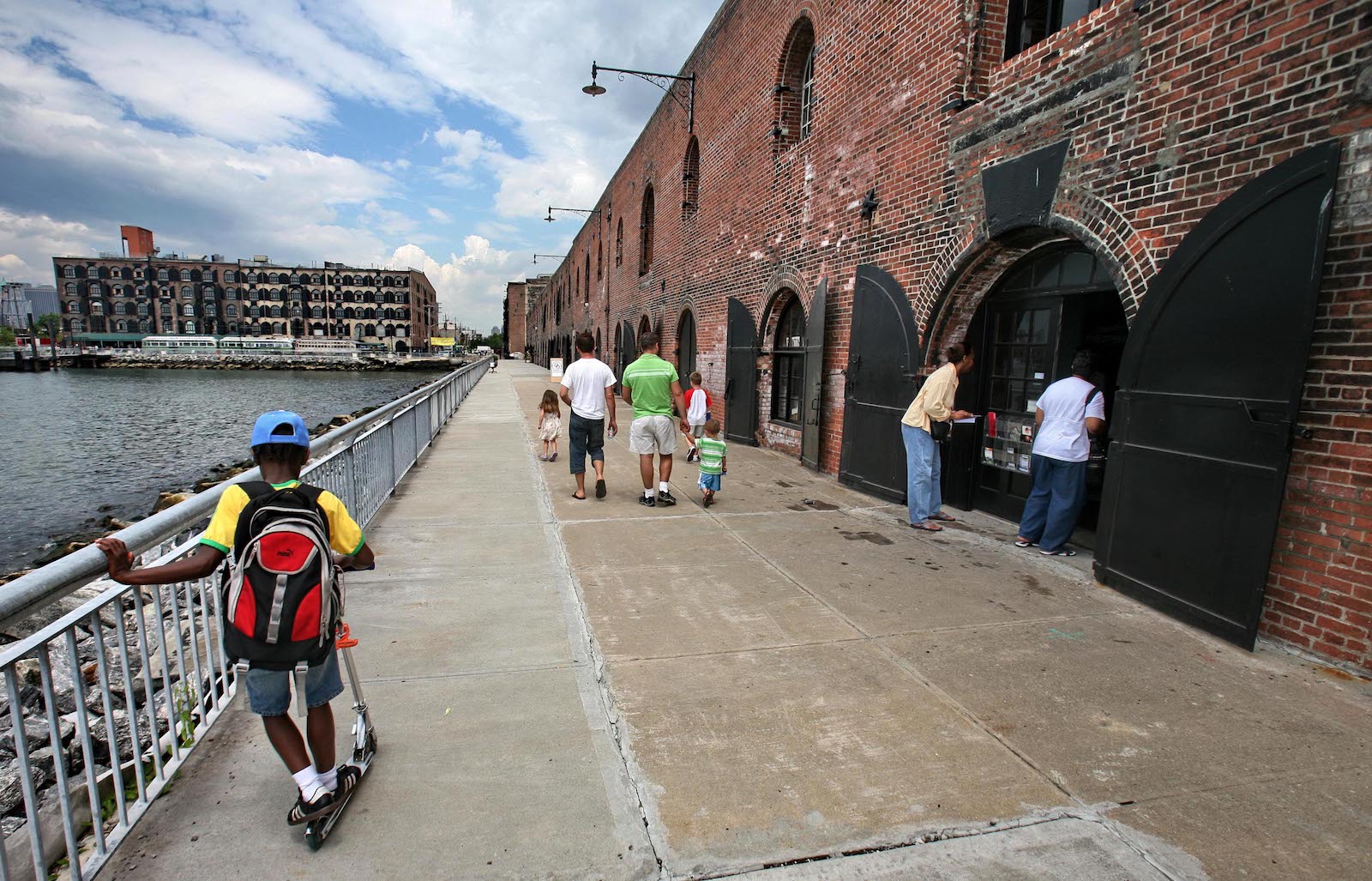
In 1913, the city created a commission to propose regulations limiting the height and size of buildings. Three years later, New York adopted the first zoning resolution in the country. It created strictly separated residential, commercial, and industrial districts, and put a limit to building height and size. The resolution’s 14 pages marked the beginning of zoning planning in the U.S.
In 1922, by order of President Herbert Hoover, a committee of urban planners wrote the State Zoning Enabling Act, or SZEA, modeled after New York City’s 1916 resolution. The act enabled communities across the U.S. to create their own zoning departments and ordinances — but it didn’t require standardized definitions for activities or guidelines on where to place them. Rather than starting from scratch, it became common practice for cities to borrow zoning structure, codes, and definitions from each other, said Sonia Hirt, a planning expert at the University of Georgia who wrote a book comparing the U.S. zoning system with those of other countries.
That meant New York’s zoning code, as the first in the nation, likely became the basis of urban planning decisions in cities across the country — and with it, its designation of a warehouse as suitable for “unrestricted districts.” In September 1921, only 48 municipalities had established zoning laws. By 1923, there were 218. And by the 1930s, all but a handful states had embraced local zoning laws in some form.
By mid-century, urban planners were struggling to fit new technologies and infrastructure into their decades-old zoning codes. Gas stations, airports, landfills, trailer parks, nuclear reactors, drive-ins, school bus parking lots, refrigerator factories, TV stations, just to name a few, had appeared on the landscape. Cities patchworked their zoning laws, but it was hard to keep up. It was during this era that New York City overhauled its zoning laws, approving its current ordinance.
In 1965, the federal Urban Renewal Administration and the Department of Commerce attempted to help cities standardize land-use definitions and categories with the release of the Standard Land Use Coding Manual, or SLUCM. Further efforts to regulate land use appeared in the late 1960s and early 1970s — including a federal statute — but all of them failed. Using the national guidance remained optional.
Just like in the first half of the 20th century, every time a new industry is born, each town in America has to evaluate where it should be placed. More often than not, Hanhardt said, municipalities choose to shove new uses into old definitions rather than create new categories. That practice has included warehousing and storage. The last time the national guidance was comprehensively updated was in 2000. The document, the Land-Based Classification Standards, includes suggested codes for mini-warehouses, refrigerated warehouses, and produce warehouses, among others. Despite some recent updates, however, it still omits any mention of sprawling e-commerce fulfillment centers.
Without national requirements, or even guidance, cities are on their own for what to do with the burgeoning logistics industry. A few, such as Howell, in New Jersey, are taking the hard step of creating a definition in their zoning ordinances for these facilities to regulate them. Others are expanding their industrial zones to make room for them, perpetuating environmental injustices baked into their local zoning codes. But most, experts said, are not doing anything at all, allowing these mega-warehouses to be built based on outdated or inadequate zoning codes that don’t account for the environmental impact of new e-commerce facilities.
In South Central Fresno, a community nestled in the middle of California’s San Joaquin Valley, residents discovered they’d been zoned out of their own homes years after it had happened. It surfaced in 2017 when a few neighbors sought approval to remodel their kitchens and sell their homes and learned that the city had quietly overhauled its zoning ordinance and classified the area as a heavy industrial district.
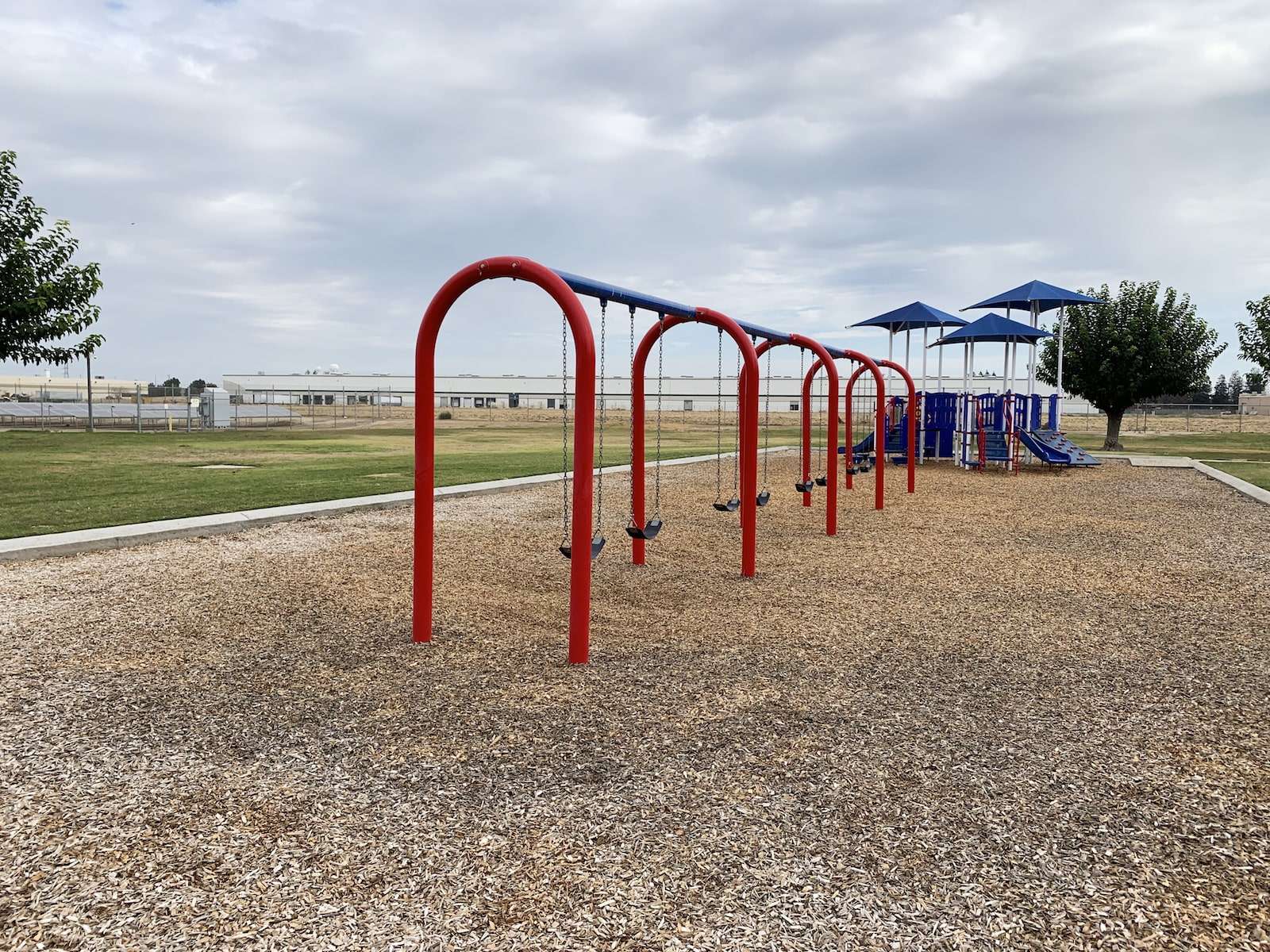
That same year, Fresno’s mayor welcomed an 855,000-square-foot Amazon fulfillment center. Just like on the opposite side of the country, in Red Hook, the behemoth was approved as a warehouse, which in this case required a scant state-mandated environmental review to comply with air quality requirements. In 2018, the beauty conglomerate Ulta built another facility, spanning 670,000 square feet, just a mile down the road.
While residents lacked municipal water infrastructure, reliant instead on backyard wells, the new warehouses next door were able to get drinking and sewer water pumped in. In addition, some of the largest facilities can be shoved into a new type of zoning district meant to act as a buffer between the neighborhood and the city’s heavy industrial area. How, residents argued, can a facility spreading across almost 1 million square feet be considered a “light” land use?
Just like in Red Hook, the answer was partially hiding in Fresno’s zoning code. In making zoning decisions, the city looks at what happens inside and outside buildings to decide their environmental impacts. Warehouse types are determined by the kinds of products they store — chemicals and minerals, industrial equipment, automobiles, feed, lumber, commercial goods. Warehouses that store goods sold “via internet orders” fall under the same category in Fresno as those that hold janitorial and restaurant supplies, despite the much higher traffic they generate.
“A lot of decision-makers have minimized and even trivialized concerns about air quality impacts on people in order to justify moving forward with development proposals,” said Ashley Werner, directing attorney at the local nonprofit Leadership Counsel for Justice and Accountability. It’s the particulate matter and benzene trail that heavy-duty trucks leave in the air, the smog and dust coating homes, the light spilling inside all night.
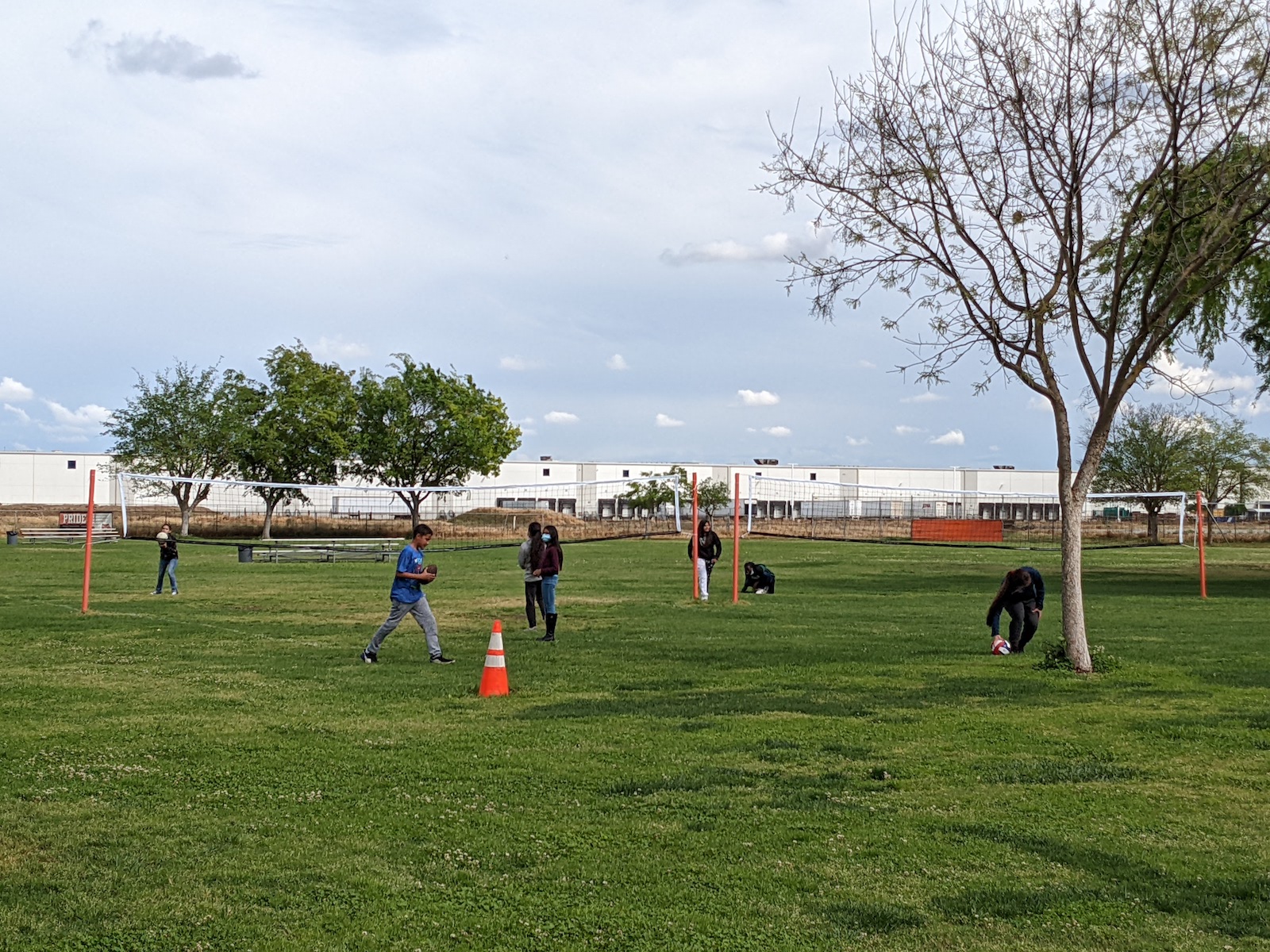
Flanked by three state highways, the 180, the 41 and the 99, the neighborhood already receives more 2.5-micrometer particulate matter pollution than 97 percent of the state’s counties, according to the California Environmental Protection Agency. “When you look at the accumulative effects, it is just as impactful as a heavy-duty slaughterhouse,” said Saunders, who works in community engagement at Leadership Counsel.
Katie Taylor lives across the street from the Amazon fulfillment center. The trucks shake her home constantly, their engines rumbling all hours of the day and night, sometimes so loud “that it sounds like someone is knocking at my door,” she wrote in a letter to the city council. The lights across the street are bright enough to disrupt her sleep and the constant flashing from traffic lights has left her daughter, who has Down syndrome and autism, particularly anxious.
For Yesenia López López, who arrived in Fresno 15 years ago from Mexico, the worst thing about the buildings is the additional traffic. “Before, it was quieter, like living on a farm,” she said. “Now, there are people and cars all the time.” Before Ulta built its facility, which López López can see from her home, she’d never been involved in a car accident in her neighborhood. Last year, she was hit by cars twice while leaving for work before dawn.
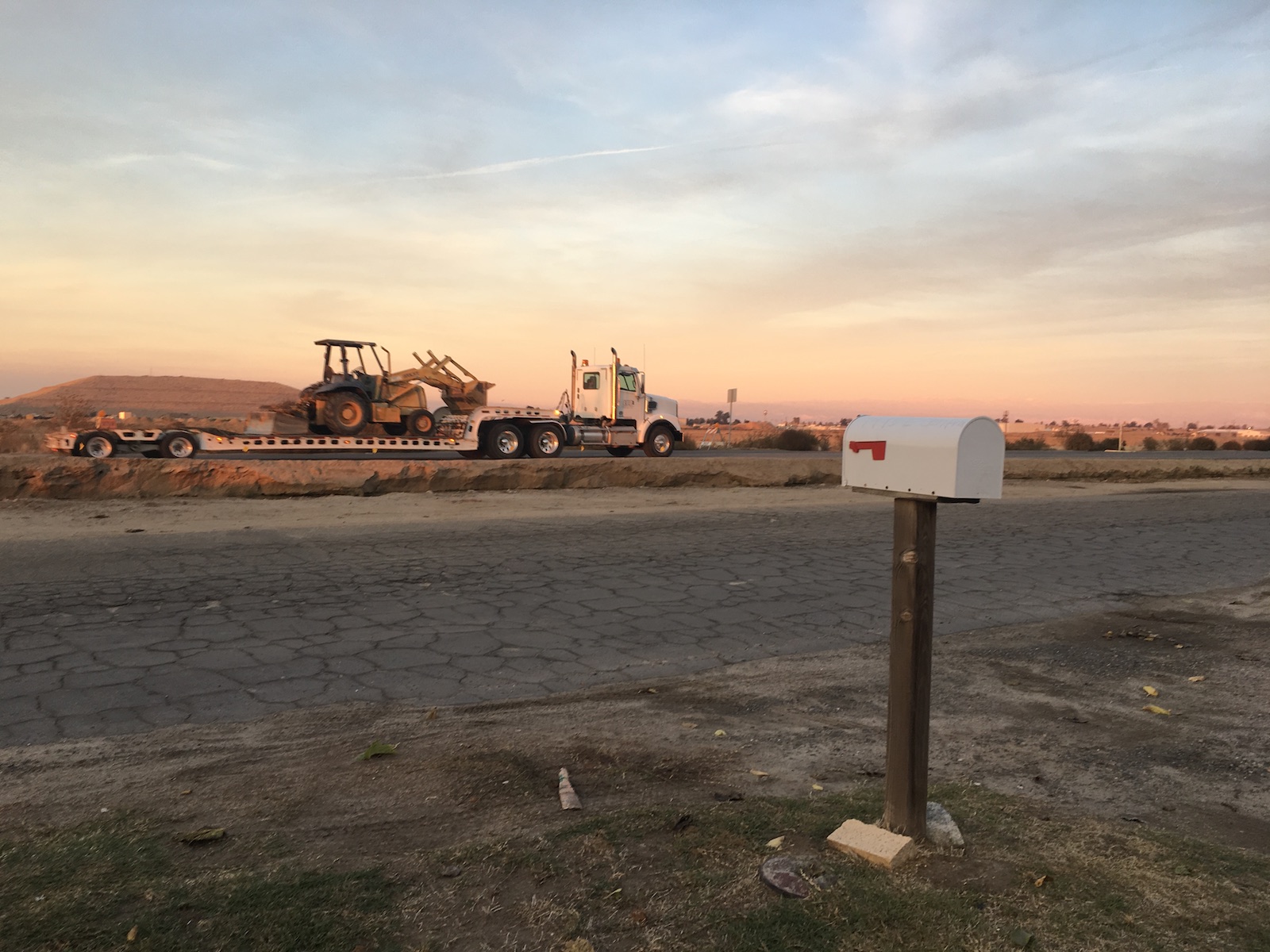
The perpetual flow of vehicles has also damaged the community’s already cracked and dusty streets, and the neighborhood has lost its sole recreational space: an unpaved strip running along the street where the last-mile facilities are popping up. “We used to go out with the neighbors, the elderly,” López said. “The ladies with their husbands went to exercise, we walked or rode bikes. We can’t go out there much anymore.”
In 2019, advocates and residents stopped a 2-million-square-foot industrial park, with seven massive warehouses, from taking root next to the Amazon facility. But developers didn’t give up, and another company applied to build a 420,000-square-foot facility to expand Amazon’s center.
About two dozen residents, some of them represented by Leadership Counsel, pushed to be heard in the planning process. After two months of talks, residents struck a deal with developers and the city, requiring paved sidewalks, safe pedestrian crossings, and up to $10,000 dollars for each affected family so they can double-proof their windows, install air filtering systems, and “basically fortify their homes in any way you can when you have heavy duty trucks passing less than 30 feet in front of you,” Saunders said.
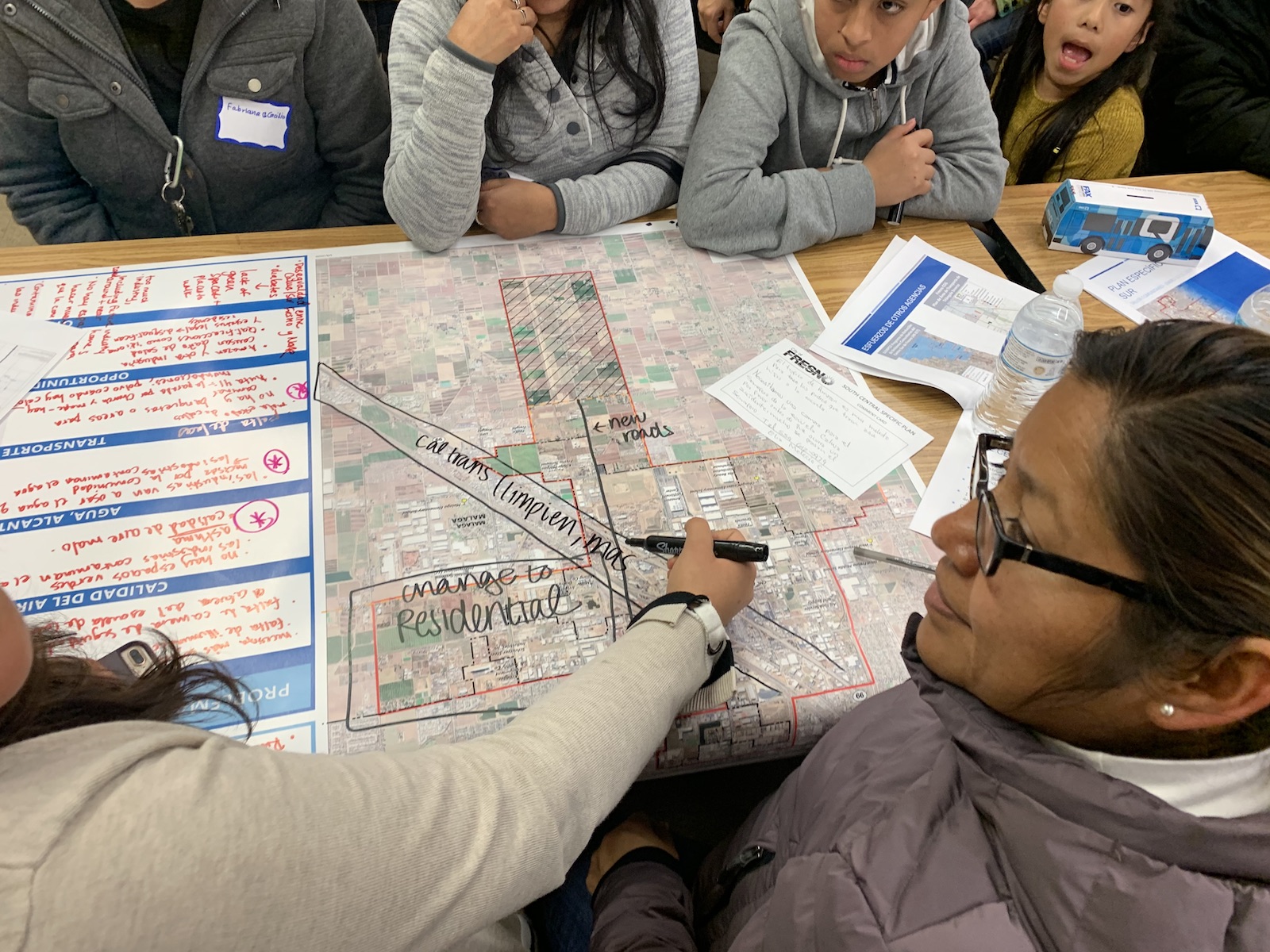
Residents and advocates also managed to convince the city to re-evaluate its 2014 overhaul of the zoning code. Under the proposal, homes and several religious buildings will go back to being classified as residential and public use. But even if it is accepted, people in South Central Fresno will remain surrounded by industrial plots.
This one-by-one approach has left community advocates and activists exhausted, said Werner. Instead, they are challenging the environmental review of the city’s new zoning ordinance, which didn’t analyze the environmental impacts of the new fulfillment centers. For Werner, an accurate definition of e-commerce facilities in Fresno’s zoning code is useless if the city doesn’t address the “bigger picture”: how through zoning, cities and counties are routinely directing noxious land uses to communities of color without protecting them. Today, the 97,000 people living in central, southeast and southwest Fresno — areas with the lowest incomes and highest densities of industrial activity — are 67 percent Latino, 23 percent Black and Asian combined, and only 8 percent white. In contrast, more than half of residents in Fresno’s affluent areas are white. Fresno’s Planning Commission did not respond to Grist’s request for comment.
“No matter what the economic development trend is at the time, the most impactful harmful uses always go to these neighborhoods,” Werner said. “That’s not just a fact of nature. That’s intentional. And it’s by design.” A solution needs to target the underlying biases and be comprehensive, she said.
One hundred and ten miles north of Fresno, a small Northern California community called Morgan Hill might have a solution.
The rumors first appeared on Nextdoor, a hyperlocal social media platform for neighbors to connect. In May 2019, a user posted an aerial shot of Morgan Hill’s city limits with the message: “Urgent alert!!! Horrible project on the way!” The post then explained that a developer called Trammell Crow planned to build a 1.1-million-square-foot “technology park” that, by all accounts, looked a lot like an e-commerce distribution center.
The building would stand 55 feet tall, have 199 docks to load and unload goods, and 752 parking spaces for workers. The site would be placed near a high school, a senior living community, and a health center. A small group of residents came together as the Morgan Hill Responsible Growth Coalition, or MHRGC. For months, they handed out flyers, sent emails, and went door-to-door to inform the community about the project. By October, hundreds of concerned residents showed up to an in-person city Planning Commission meeting where developers were presenting their design.
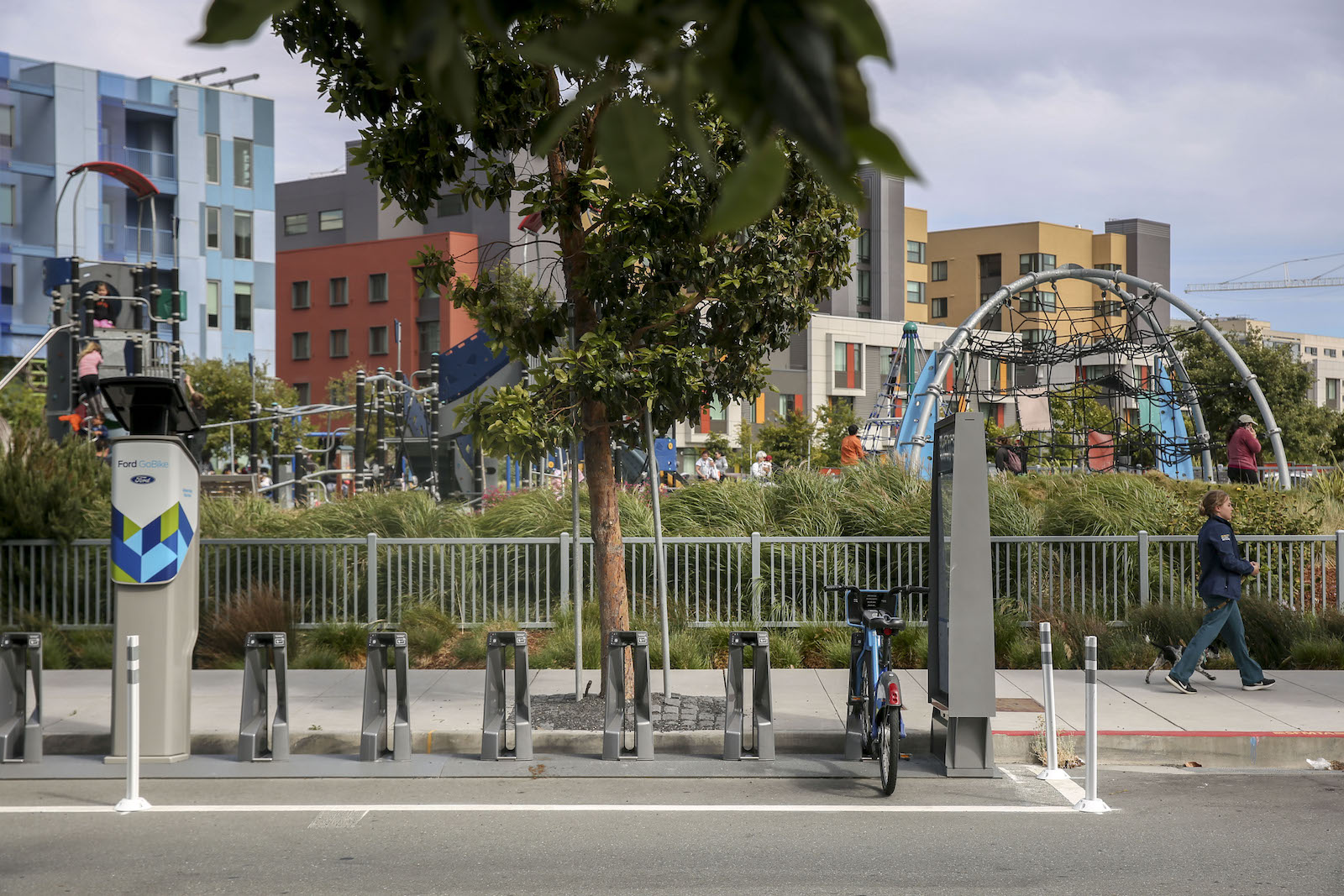
At the heart of the discussion was the city’s zoning code definition of a warehouse, adopted in 2018. “It’s very broad. It’s very vague. It enables a lot of interpretation,” Jennifer Carman, who works at the planning department, said 13 minutes into the meeting. Then, looking directly at the commissioners, she explained: “Our zoning ordinance does not define a fulfillment center at this time. Should it be regulated differently than a warehouse and distribution and, or, be prohibited?”
For nearly three hours, dozens of people spoke in front of the commission against the project. In the months that followed, the pressure kept mounting. In October 2020, the Morgan Hill City Council approved an amendment presented by the planning commission that included new definitions for fulfillment centers and parcel hubs.
The council defined a fulfillment center as a building with a minimum of 100,00 square feet, 24 feet tall, and where e-commerce products are stored and distributed either to consumers or through a parcel hub, the last step in the e-commerce distribution network — or the so-called last-mile facilities. Not only did they define the new land uses — they effectively banned fulfillment centers from Morgan Hill. Council members kept working with the Morgan Hill Responsible Growth Coalition and in April 2021, they enacted even stricter definitions: prohibiting buildings bigger than 75,000 square feet; 34-foot-high ceilings over more than 25 percent of the building; and more than one dock-high door per 25,000 square feet.
Closer to New York City, several municipalities are trying to pass similar changes addressing zoning loopholes. Howell, New Jersey’s town council recently approved an ordinance that separates warehouses — defined as “facilities involved in short to long-term storage of bulk materials and products… and distributed in bulk with little to no material repackaging, repurposing, or breakup” — and fulfillment centers, places that receive, store, separate, and distribute products to individual consumers.
Experts, however, argue that while changing definitions is vital to fixing the inequities baked into zoning codes, it’s not a silver bullet. Such changes won’t address the pollution that communities are already experiencing from existing e-commerce facilities and other polluting industries close to their neighborhoods. They point to the Inland Empire, an area encompassing Riverside and San Bernardino counties close to the Los Angeles Port, where e-commerce warehouses arrived 20 years ago.
Last May, California’s South Coast Air Quality Management District approved the first legislation in the country regulating the indirect sources of pollution — trucks and cars — generated by the giant warehouse facilities. The legislation requires that warehouses and fulfillment centers larger than 100,000 square feet — encompassing about 3,000 facilities in Southern California — report their pollution impact to the air district, which then scores each facility’s impact. Those companies that score high impact numbers can then pick from a list of mitigating options to improve their ratings, like electrifying part of their fleet or installing solar panels. If they don’t want to comply or can’t reach zero, they can pay a fee that will help to clean up communities.
Bautista, from the NYC-EJA, said many frontline communities don’t oppose all industrial activity, as a certain level keeps property prices low — shielding neighborhoods from further gentrification. In Red Hook, this is particularly urgent. Ten years ago, Superstorm Sandy completely altered the neighborhood’s makeup. As longtime residents who were unable to fix their homes left, wealthier people came in, driving up housing prices. Developers started paying attention, envisioning a similar fate as other waterfront neighborhoods in Brooklyn. Red Hook soon became one of Brooklyn’s most expensive areas to buy new property.
“What these waterfront neighborhoods really want is to be job centers in the new economy of the Green New Deal,” Thaddeus Pawlowski, an urban planner and resiliency expert at Columbia University, said during a panel discussion about the sprawl of e-commerce facilities in the neighborhood.
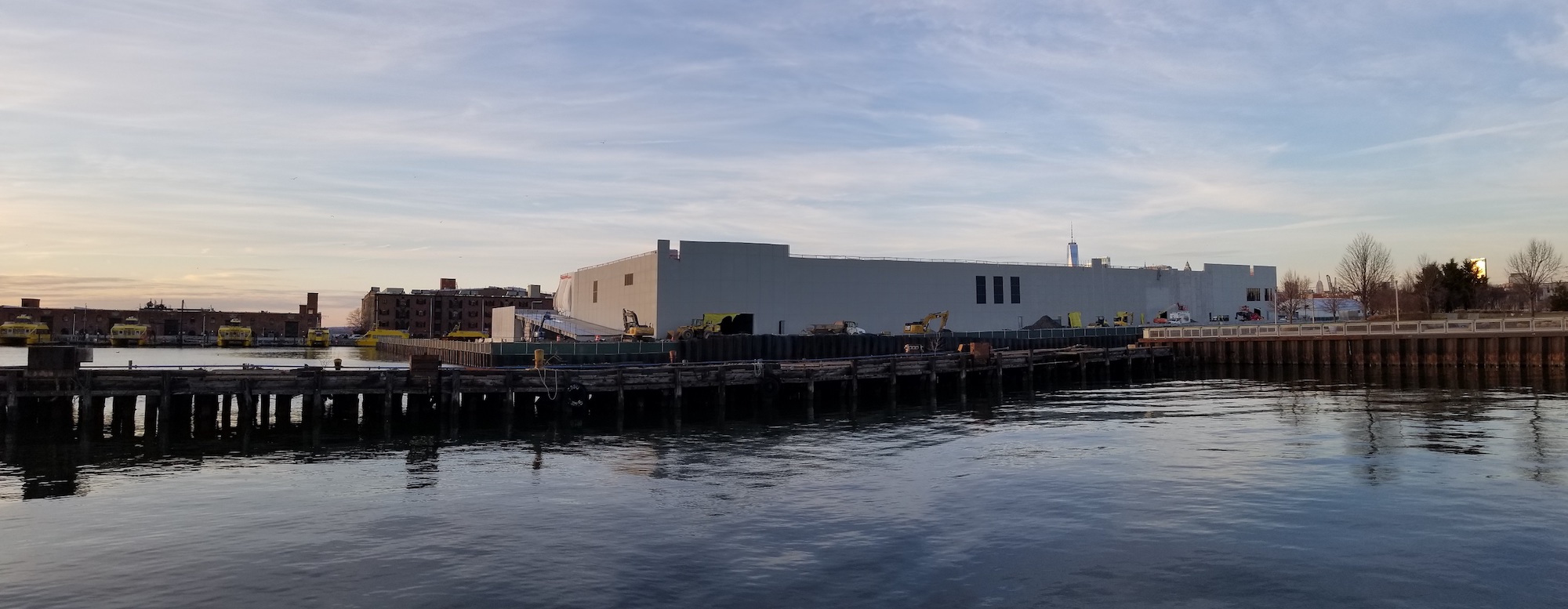
Bautista dreams of blue-collar jobs to build the wind turbines needed for one of the country’s largest offshore wind projects, slated for Long Island Sound. But the distribution center crisis has shown him that growth has to be done carefully. That’s part of the reason why NYC-EJA, Earthjustice, city assembly member Marcela Mitaynes, and the grassroots organizations UPROSE and The Point CDC launched a coalition urging the city to include a definition of last-mile trucking facilities in the zoning code based on size and the number of vehicle trips per day.
“We would like to see a definition or special category made for e-commerce facilities, which would allow for special permitting, public review, and/or extra mitigation,” said Disa, from Earthjustice. Ideally, the amendment would define last-mile trucking facilities based on size and the number of vehicle trips per day, allowing regulators and communities to fully understand the impacts.
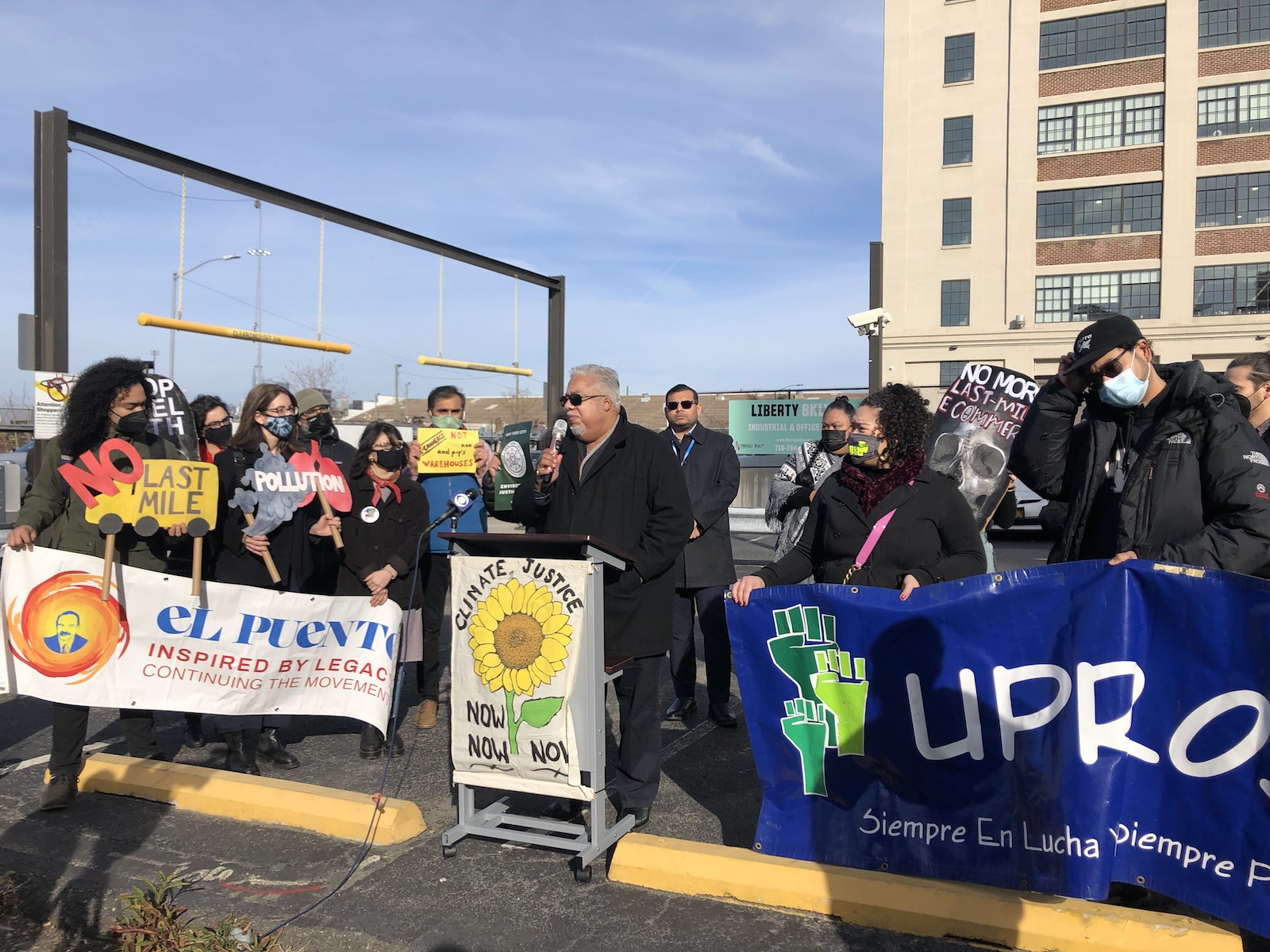
Rebecca Weintraub, spokesperson for New York City’s Department of City Planning told Grist that the department is currently working with several city agencies, including the departments of transportation and health, “to better understand where e-commerce distribution centers are locating, and even congregating, and their effects on the health of surrounding neighborhoods.” She did not specify if there are plans to review zoning regulations in the city.
Bautista remembers what it was like growing up in Red Hook in the 1970s and ‘80s. The city’s bankruptcy left rennovation of the neighborhood’s sewer system unfinished for months. A building in his block fell from lack of maintenance, killing a man and his daughter. In the following decades, Bautista spearheaded the fights trying to keep power plants and other industrial activities away from the community. Red Hook eventually won a defining battle against a waste transfer station slated for next to one of the neighborhood’s largest parks.
Today, a 311,796-square-foot Amazon fulfillment center is being constructed in that same spot. For Bautista, that reality is bittersweet.
“You know, I didn’t win that fight just so Amazon or Ikea or whatever companies could build warehouses,” he said.
*Correction: This story originally misidentified the timeline of negotiations in Fresno.
